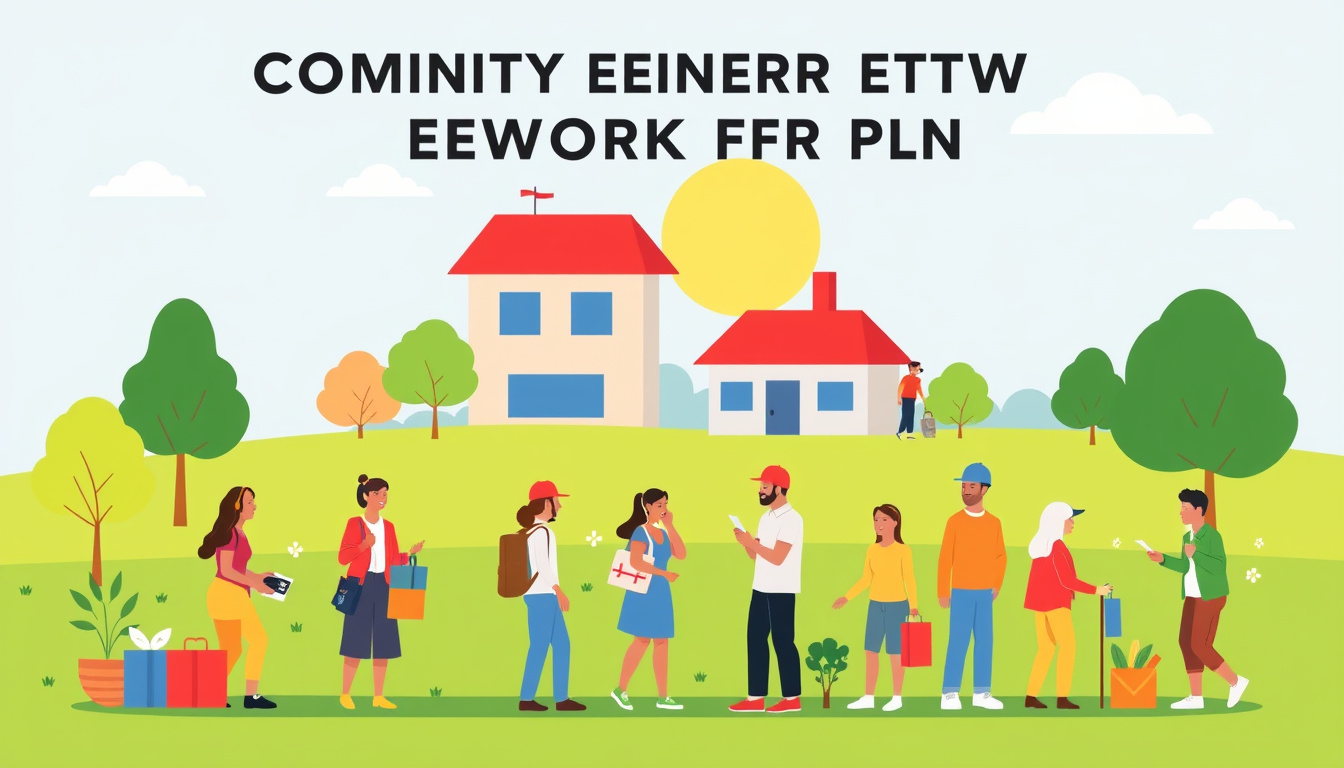Natural disasters, public health emergencies, and unforeseen crises can strike at any moment, underscoring the importance of having an effective emergency network plan. This comprehensive guide will provide you with the necessary steps to develop a plan that ensures the safety and well-being of you and your loved ones during such critical times.
Understanding the Importance of an Emergency Network Plan
An emergency network plan is crucial because it provides a structured response to potential disasters. It enables individuals to communicate effectively, ensure mutual aid, and ensure access to critical resources when needed. This is particularly important for families or communities that include individuals with special needs, such as those with disabilities, seniors, or small children.
Steps to Develop an Emergency Network Plan

Step 1: Identify Potential Risks
Begin by assessing the types of emergencies that could affect your area. This could include natural disasters (floods, earthquakes, hurricanes), man-made incidents (terrorism, industrial accidents), or specific health crises (pandemics). Understanding your exposure to various hazards will allow you to tailor your emergency plan accordingly.
Step 2: Establish Communication Protocols
Communication is key during emergencies. Develop a family communication plan that outlines how you will reach each member. This should include:
- Designating an out-of-area contact person who can maintain communication if local lines are busy or disrupted.
- Creating a group chat or using emergency apps that facilitate quick messaging among family members.
- Establishing meeting points where everyone can gather if communication fails.
Step 3: Build a Support Network
Every individual should have a personal support network that includes a minimum of three people within frequent contact. This can include family members, neighbors, and coworkers. This network is essential for sharing resources, coordinating assistance, and providing emotional support during emergencies.
Step 4: Create an Emergency Plan
Utilize templates available from organizations such as Ready.gov and the United Spinal Association to craft a personalized Family Emergency Communication Plan. This document should include:
- Essential contacts: family, friends, schools, workplaces.
- Emergency meeting spots: safe locations to reunite if separated.
- Medical information: details about medications, allergies, and medical devices needed, especially for vulnerable individuals.
Step 5: Assemble an Emergency Kit
Every household should have an emergency kit that contains the following essentials:
- Water (one gallon per person per day for at least three days)
- Non-perishable food (three-day supply)
- Battery-powered or hand-crank radio
- Flashlight, extra batteries, and a first aid kit
- Whistle to signal for help
- Dust masks, plastic sheeting, and duct tape
- Personal hygiene items and necessary medications
Step 6: Stay Informed and Prepared
Sign up for local alerts and warnings. Many communities have systems in place to notify residents about emergencies via text or email. Staying informed helps you react quickly and efficiently.
Step 7: Conduct Regular Drills
Practice your emergency plan with all members of your household. Conduct drills at least twice a year to ensure that everyone knows their roles, understands communication protocols, and feels confident in executing the plan. Make adjustments as needed based on these practices.
Step 8: Consider Special Needs
For families that include individuals with disabilities, ensure that the emergency plan addresses specific needs:
- Accessibility considerations: Plan for accessible transportation if evacuation is required.
- Medical devices: Ensure there are provisions to charge and transport essential medical equipment.
- Unique communication needs: Utilize sign language or braille, as applicable.
Additional Resources
- Ready.gov: Offers templates and checklists for creating a robust emergency plan.
- FEMA App: Provides timely emergency notifications and allows quick access to safety information.
- Local Emergency Management Offices: Can provide guidance tailored to your specific community risks and resources.
Conclusion
An emergency network plan is not merely a regulatory checkbox; it is a critical lifesaving initiative that promotes safety and preparedness within communities. By following these structured steps and involving your network, you can build resilience against any emergency. Start drafting your plan today, so you can ensure that when the unexpected happens, you are ready and well-equipped to handle it together.



